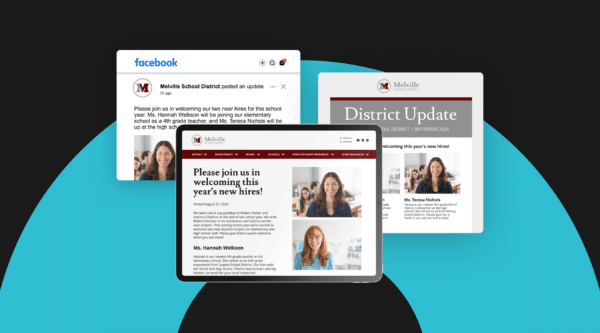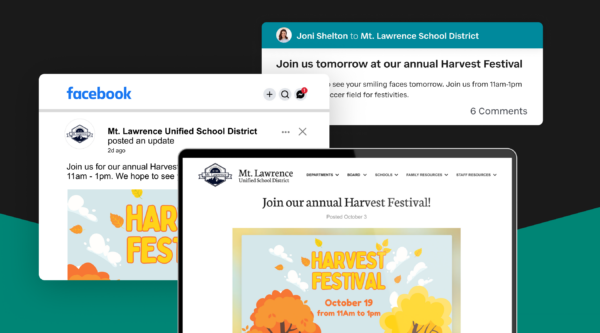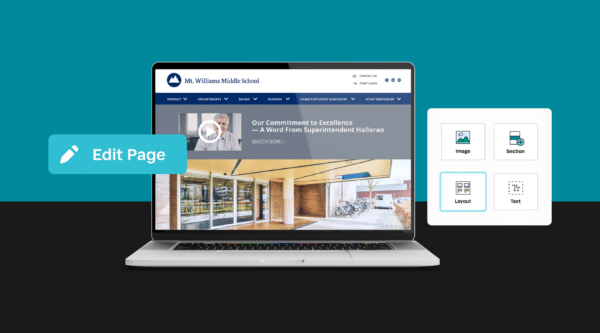

How much effort does it take to produce your school newsletter? If you’re like most schools, you spend time chasing down content ideas, coaxing faculty members to contribute, and rushing to pull everything together in time. After all that, you email it out to families, but then what? Does anyone read it? Is there feedback? Or does it disappear into the void?
A well-crafted newsletter should be a vital communication tool that fosters family engagement and involvement. Yet, too often, the effort involved in producing it outweighs the impact it has. But it doesn’t have to be that way.
By planning strategically and adjusting your approach, you can turn your newsletter into a highly effective communication channel. Here are seven best practices to create a more impactful school newsletter.
1. Set Your Goals and Know Your Readers
Before jumping into content creation, step back and ask: Why are we creating this newsletter? What purpose does it serve, and who is the target audience? Your primary readers may be families and caregivers, but faculty, staff, and even students will likely read it too. Knowing your audience is essential to crafting content that resonates with your broader school community.
Start by discussing the goals with your team. Are you promoting upcoming events, encouraging parent-teacher interaction, or sharing student achievements? Once goals are established, keep them in mind as you plan your content and structure your newsletter. Also, consider how you’ll motivate readers to take action or share the content.
2. Plan with a Content Calendar
Don’t wait until the last minute to assemble content. Implementing a content calendar helps you map out topics, deadlines, and recurring features in advance. This allows your team to plan ahead and ensures you never scramble for content at the last minute.
You can streamline the process by including recurring sections, such as:
- Classroom highlights
- Faculty profiles
- Sports or activity updates
Having these set sections in every issue simplifies content generation and provides consistency for your readers.
3. Use a Compelling Subject Line
The subject line of your newsletter email is just as important as the content inside. It’s the first thing readers see and often determines whether they will open it or ignore it. A compelling subject line should:
- Highlight key content or benefits
- Be concise and attention-grabbing
- Avoid spammy tactics like excessive punctuation or ALL CAPS
For example: “ABC Elementary News: Why You Can’t Miss Next Week’s Family Night!” By keeping part of the subject line consistent each month, you create a sense of continuity while giving a sneak peek of the issue’s contents.
4. Make It Mobile-Friendly
With over 50% of emails being opened on mobile devices, ensuring your newsletter is mobile-friendly is critical. Avoid using PDF attachments, which can be cumbersome to view on phones, and instead opt for responsive design that adapts to any screen size.
Here’s where Smore comes in: Smore is a fantastic tool for creating visually appealing, mobile-responsive newsletters with ease. It simplifies the design process, ensuring your newsletter looks professional on any device, without the need for technical expertise. Smore also tracks engagement metrics, so you can see how your newsletter is performing in real time, helping you optimize future issues.
Combined with SchoolStatus, you can take communication to the next level. While Smore helps you design beautiful newsletters, SchoolStatus ensures they reach the right audience, allowing you to engage families effectively through seamless integration.
5. Personalize Your Email
Personalizing your newsletter makes it more likely to be read. Start by sending it from a familiar email address, such as a well-known teacher or administrator, rather than a generic school address. This makes your message feel more personal and helps avoid spam filters.
Additionally, address recipients by name in the salutation using the personalization tools available in most email platforms. These small touches can significantly boost open rates and reader engagement.
6. Measure Performance
Tracking the performance of your newsletter is key to improving it over time. Monitor key metrics such as:
- Open rate: How many recipients opened the newsletter?
- Click-through rate: How many readers clicked on links within the email?
- Content engagement: Which sections generated the most interest?
Platforms like Smore make it easy to track these metrics in real-time, offering insights into what content works best with your audience. Use this data to refine your approach for future issues, focusing on what resonates most with your readers.
7. Encourage Social Sharing
Maximize the reach of your newsletter by making it easy for readers to share. Include social media sharing buttons in your email, allowing families to post content directly to platforms like Facebook or Twitter. Creating a web-based version of your newsletter is another way to extend its reach.
Platforms like Smore make it simple to share newsletters beyond email, offering a clean, web-friendly format that’s perfect for social media. With SchoolStatus, you can further strengthen communication by integrating data-driven insights into your outreach strategy, ensuring that every message counts.
Conclusion
Producing an effective school newsletter doesn’t have to be a daunting task. By setting clear goals, using a content calendar, and leveraging the right tools to simplify design and track performance, you can create newsletters that truly engage your audience. Prioritize mobile-friendliness, personalize the experience, and always measure your results to ensure your newsletters are hitting the mark.
Remember, your school’s newsletter is more than just an information dump—it’s an opportunity to strengthen connections with your community, celebrate achievements, and inspire engagement.If you’re ready to create more impactful newsletters, try Smore for a professional, streamlined approach that saves time while increasing engagement. And don’t forget to pair it with SchoolStatus to amplify your communication efforts and ensure every family stays informed and engaged.
Stay Connected
News, articles, and tips for meeting your district’s goals—delivered to your inbox.





